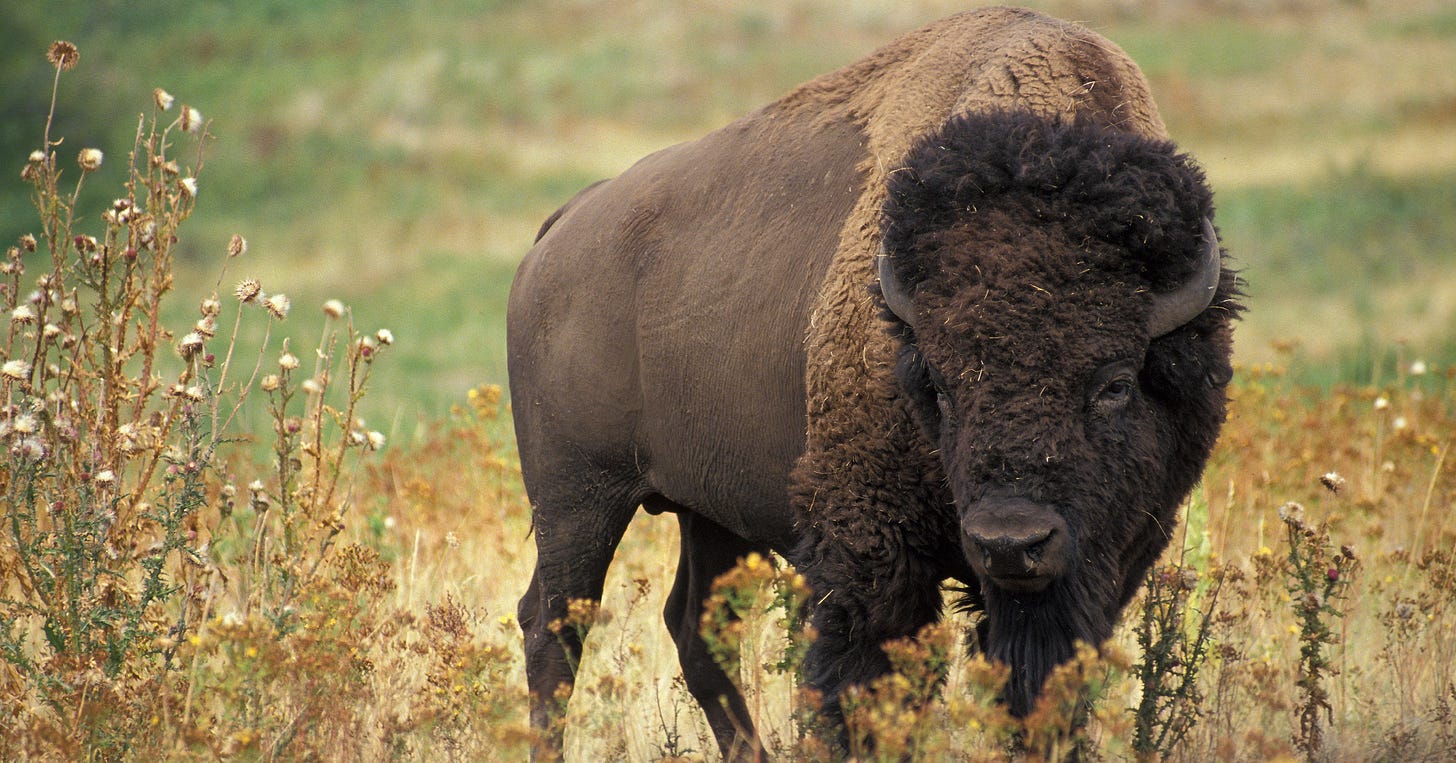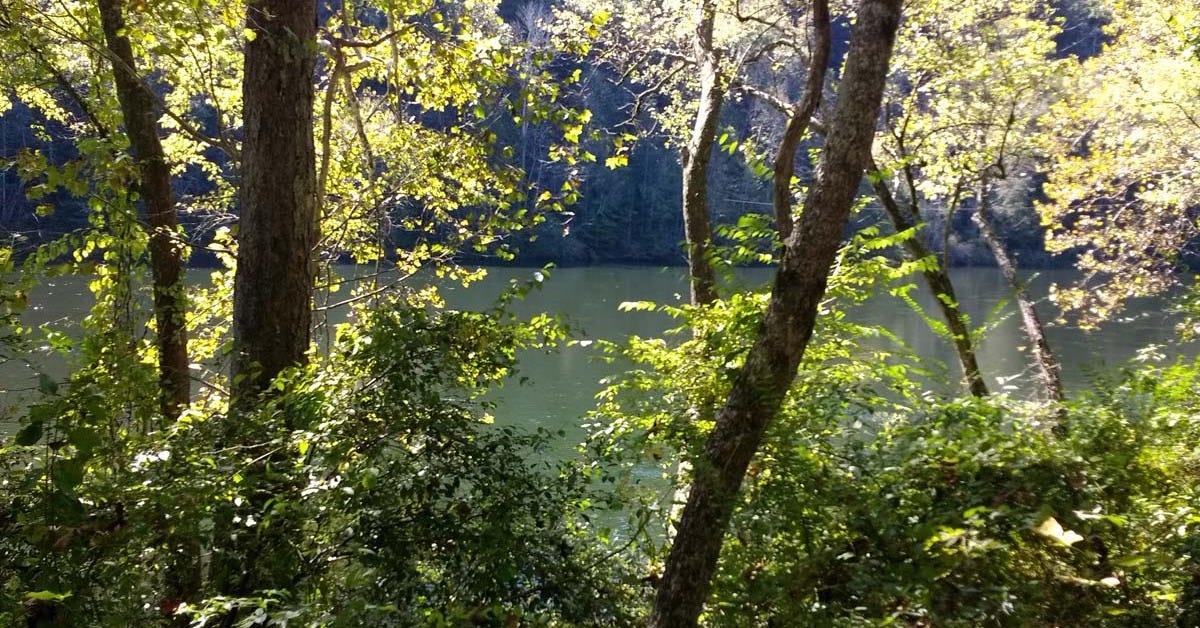“Half-Earth”?
Our want on destruction of nature is a one-time, irreversible experiment on our shared ecosystem—a threat to humans as well as to the natural world. The human economy is crowding out almost everything else on the planet, extinctions are accelerating, and many species are in sharp decline. Many writers have eloquently warned us about the extinction crisis, including Elizabeth Kolbert, Anthony Barnosky, and Edward O. Wilson.
Edward O. Wilson, the famed American biologist and naturalist, has made one especially controversial proposal. In his book Half-Earth (p. 3), Wilson proposes “committing half of the planet’s [land] surface to nature.” We certainly do need to set aside large portions of the planet for wilderness. But Wilson’s writings are disturbingly vague on what this means. Which half of the planet does he propose be set aside for wildlife? And how does he propose to do it?
Wilson’s suggestions
Wilson is a brilliant scientist, but social and economic theory is not his strong suit. He just doesn’t discuss how to carry out his proposals in much detail. He evidently wants to expand existing wilderness reserves, and advocated “the so-called hot-spot technique or methodology, which helps judge which species are in the greatest danger.”
Well, where do you suppose such “hot spots” and “reserves” would be? We can start by saying where they are not. They are not going to be in agricultural areas. To begin with, there are no endangered species in agricultural areas because agriculture has mostly wiped out any “competing” species. There’s nothing left to protect!
To be meaningful, true wilderness areas must include biologically productive land. If we content ourselves with merely allocating all the desolate areas of the planet to “wilderness”—e.g., Greenland, Antarctica, the Sahara Desert—we won’t be doing wildlife any significant favors. Agricultural land is the most massive single human use of land. It dwarfs human land use for urban areas, roads, mining, and everything else combined. Of course we need to eat, but most agricultural land (about 75%) is going for livestock agriculture, an extraordinarily inefficient source of nutrition.
First of all, most of the areas that could be developed for human use already have been developed. Existing areas of refuge on the planet are going to be “reserves” or “hot spots” that are relatively out-of-the-way and difficult to “develop.” They are not only going to be a refuge for wild species struggling to avoid extinction, they will also be areas that are a shelter for humans desperate for survival. This method of expanding existing “hot spots” might be read to imply that we’re going to chase all the current inhabitants—frequently people of color in the periphery with lower income—away from these lands and plant trees, in the name of biodiversity.
Wilson is a scientist by training and I seriously doubt that he is deliberately trying to benefit the billionaire class. This plan just wasn’t completely thought through. As Napoletano and Clark comment, “conservation is enmeshed in an inherently socio-political process . . . Interventions that exacerbate social injustices . . . even if they seem viable at the moment . . .will deepen the metabolic rift and worsen the biodiversity crisis.”
It is left for us to spell out the necessary conclusion. If protecting large areas of the planet for wilderness is to be meaningful, that means drastically reducing or eliminating the capitalistic, ever-expanding livestock industry.
Are humans the problem?
Humans are not intrinsically the problem here, at least not with current resource availability and population levels. What is an intrinsic problem are human-created social systems. If we think of human society as an organism, routing agricultural resources into the economy and the agricultural outputs into people’s needs, anyone can see that human society is profoundly unequal.
The distribution of food is obviously unequal; many are starving or close to it, while a few are eating like royalty. But production is also unequal, and typically slanted toward rewarding capitalistic growth. After the Green Revolution, most of the new food surpluses created were funneled toward the livestock industry, not to the poor — a consequence of the Jeavons effect, wherein gains in efficiency also make their products cheaper, resulting in a net increase in resource consumption.
We could eliminate or drastically reduce the industrial livestock industry and allocate those lands (grazing land and croplands growing food for livestock) to wilderness. This doesn’t displace any significant number of humans from space humans now inhabit, except perhaps the occasional cowboy camping out underneath the stars. This could return about one-third of the biologically productive areas of the planet to wilderness — mostly grazing land but also much cropland.
Other alternatives should also be researched. Agroforestry seems to increase biodiversity, but the effects are not great. Agroforestry techniques in Ethiopia substantially reduced soil erosion by 2/3, to 5.3 tons / hectare / year. But this is still 5 to 10 times the natural rate of soil formation of 0.5 - 1 ton / hectare / year: much better, but still not sustainable. Organic farming systems should also be investigated. Organic agriculture does increase the biodiversity of some species, such as insects, relative to conventional industrial agriculture; but the results are not uniform, and it helps some species more than others.
Certainly we should investigate all of these further, but so far as biodiversity goes, simple abandonment of lands devoted to industrialized livestock agriculture is likely to be the easiest method to produce actual biodiversity results. We are not coming after Plains Indians hunting the buffalo, or the Maasai in Africa, when we’re talking about industrialized livestock agriculture! We are talking instead about the industrialized cropping and factory farm systems that produce well over 90% of meat and animal products for those in advanced industrial societies.
It’s not going to be quite that simple. In addition to all of the other environmental issues we face (remember climate change?), there are large social and political obstacles. Not everyone is going to be happy with a mostly plant-based diet. Those employed by destructive industries, not only in agriculture but also elsewhere (e. g. coal miners), would need some alternative means of support. Certainly, we should be protecting nature, but not to the detriment of the poor or indigenous peoples — rather, at the expense of a highly industrialized capitalistic agricultural system. Protecting nature in this way displaces few if any humans from their homes, and significantly addresses a growing biodiversity crisis.
Besides helping animals and plants, there would be benefits to humans from such a program. A change towards a more vegetarian diet would benefit everyone’s health. There has been at least one (brief) experiment in such a mass transition: in 1917 and 1918, during the First World War, Denmark’s food supply was limited by the Allied blockade. Denmark shifted to a mostly lacto-vegetarian diet and limited alcohol production. The death rate dropped to its lowest level in years, and the death rate for non-infectious diseases dropped by 34%! By contrast, Germany suffered widespread famine in 1918.
Dedicating these areas to wilderness would reforest much of the planet, so there would be climate benefits as well. Tree restoration could draw down much of the anthropogenic carbon added to the atmosphere. Forests are a major carbon sink. Through reforestation, we could naturally “sequester” 205 Gt C (gigatons of carbon) — compared to the total anthropogenic atmospheric carbon burden of 300 Gt C! This is quite significant even though not all of the sequestered carbon would come out of the atmosphere (e. g., some would come out of the oceans). A radical decrease in cattle would also result in a substantial decrease in atmospheric methane—which cattle naturally emit, mostly through belching.
Sources of resistance
Others are also thinking about how to preserve nature and are resisting the forces driving other species (not to mention humans) to extinction.

Deborah and Frank Popper proposed to return most of the American Great Plains to wilderness, which they termed “the Buffalo Commons.” The land could be mostly de-privatized and re-assembled by the government. The Great Plains is already increasingly deserted, and existing human settlements could then become “urban islands in a shortgrass sea.” Endangered species will not necessarily magically reappear in these areas; at least at first, humans will have to “police” nature—mostly, but not entirely, policing themselves.
We should be working with indigenous cultures in conserving nature. The Poppers explicitly proposed cooperation with the indigenous peoples of the Plains and returning some of the Indian lands seized earlier back to the various tribes. The Rosebud Sioux tribe has officially endorsed the idea of the Buffalo Commons, and other indigenous groups have made parallel efforts.
Another notable source of resistance is a growing animal rights movement that seeks to end the captivity of billions of domesticated animals who suffer horribly on factory farms (see e. g. Peter Singer, Matthew Scully, and Jonathan Safran Foer). Industrialized factory farms tortures and slaughters literally billions of innocent animals every year. Slaughterhouse workers suffer from being forced into one of the least-desirable occupations — a low-paying, traumatic job with high turnover and high injury rates. Abolishing factory farms would be a significant advance for both these workers and the animals.
For anyone even vaguely aware of the magnitude of the environmental crisis, protecting nature shouldn’t be that controversial. While there are major social and political obstacles, and numerous details to work out, there are no fundamental technical challenges. We know how to grow plants, and the infrastructure to do so is already there! The only practical way to accomplish such a dramatic expansion of wilderness is by sharply reducing or eliminating capitalistic livestock agriculture, which could address multiple environmental and social problems at the same time.




I wish people were even remotely open to changing their diets. I worked full time in animal rights for 10 years and its crushing how much people will do to convince themselves it is OK to brutalise and murder billions of animals and destroy habitats to do so for a “moment on the lips”
On a macro scale this makes a lot of sense and, as you point out, is practically feasible although politically less so. There are (of course!) problems when we zoom into detail. The two immediate ones that come to mind are jobs and regional income. It's not that these are insurmountable but some thought needs to be given to the mechanisms that will counter these effects, particular in poorer areas. Stewardship roles, limited tourism-based jobs or agriculture are possibilities.
There is also the rarity value of meat to consider and the likelihood of illegal trade and general poaching. The reduction of meat consumption would need to be gradual, price controlled and rationed. This gradualist approach is also necessary to manage the employment transition and avoid as much of the inevitable outcry about green policy coming at the expense of the less well off.
At the same time, there is an equally tricky task of transforming much more farming to regenerative practices and the question of cultured meat products. All this depends on a much more interventionist approach by governments on a global scale and the COP meetings do not inspire hope in that direction.
The only hope of a managed change is to grow enough support on the ground to enable newer political parties to gain traction and ultimately gain power. More likely, intervening factors will disrupt world trade and the resultant need to be more locally self-sufficient will force some change on a scale that cannot be business as usual. More painful but if there are practical green solutions ready and large base of support it is possible that this could be implemented.